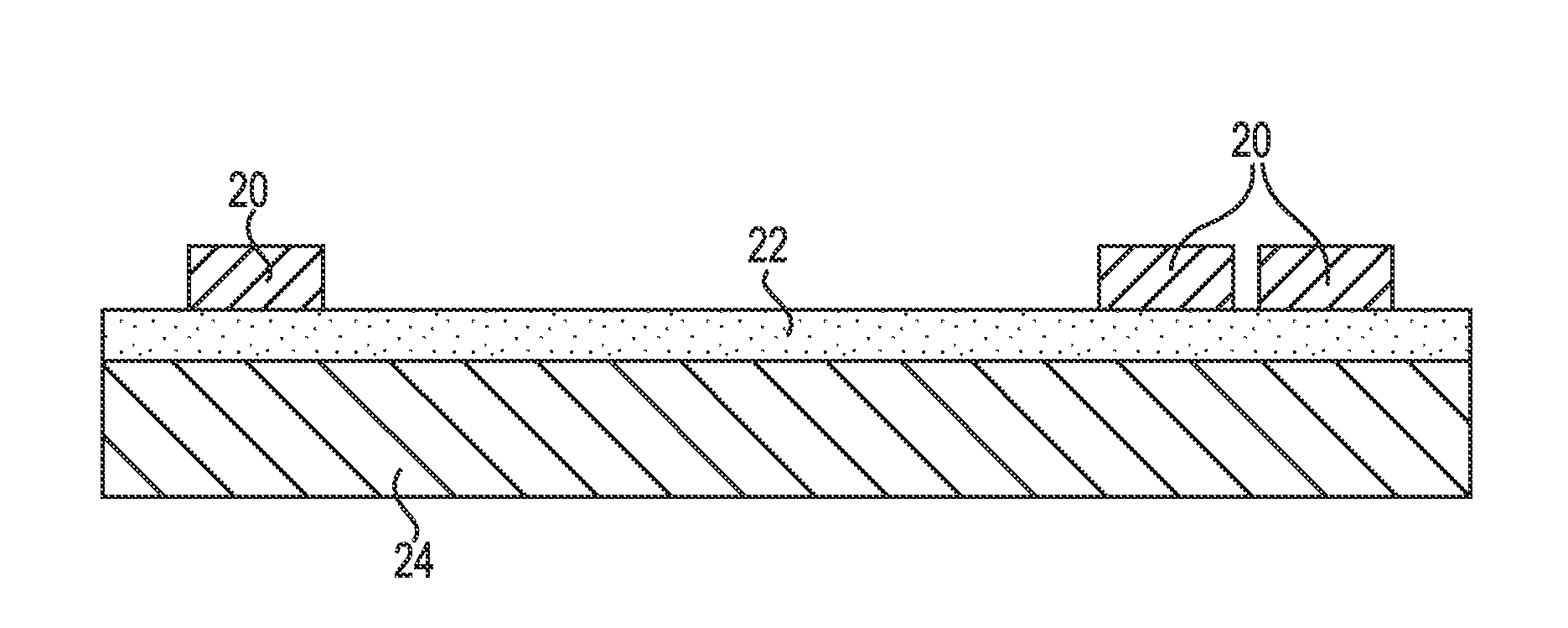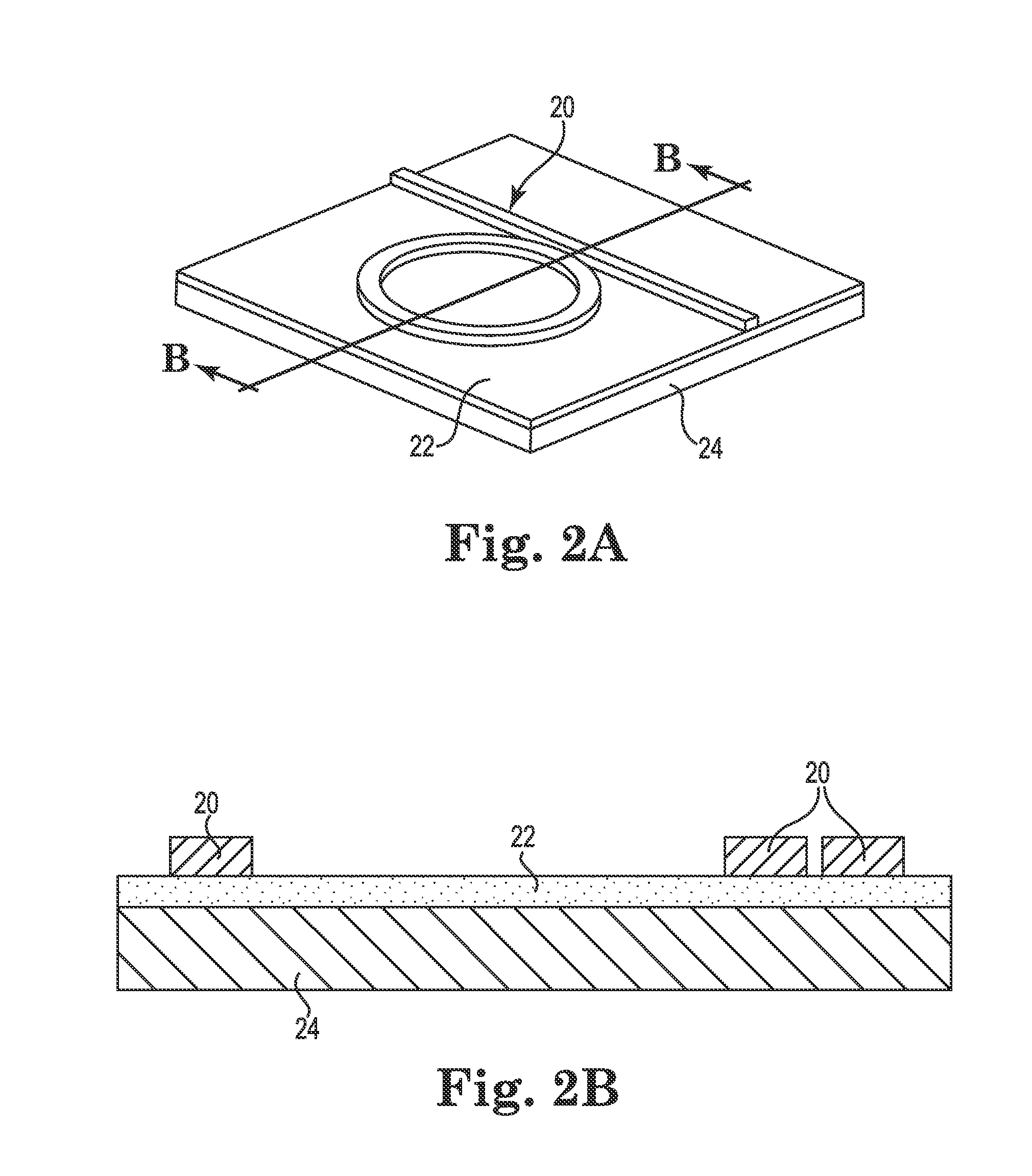Method of forming flexible and tunable semiconductor photonic circuits
a semiconductor photonic circuit and flexible technology, applied in the field of forming flexible and tunable semiconductor photonic circuits, can solve the problems of inability to adapt or re-programme silicon photonic devices, lack of high electrical performance of crystalline inorganic semiconductor materials, and fixed silicon photonic devices that cannot be adapted or re-programmed, etc., to achieve the effect of preserving optical functionalities and performance, tuning over a large range, and reducing contact area and overall bonding for
- Summary
- Abstract
- Description
- Claims
- Application Information
AI Technical Summary
Benefits of technology
Problems solved by technology
Method used
Image
Examples
example
[0068]The following exemplary method of the present invention is schematically illustrated in FIGS. 24 through 28. On a standard silicon-on-insulator wafer (SOITEC, Unibound, 220 nm top silicon layer, 3 μm buried oxide layer) (FIG. 24), a silicon photonic circuit was patterned using one-step electron beam lithography (Vistec, EBPG 5000+) and plasma dry etching (Trion II ICP-RIE) with chlorine based chemistry. The resulting circuit is shown in FIG. 25. Subsequently, the substrate was etched in 10:1 buffered oxide etch (BOE) solution, for a precise period of time and at a precisely controlled temperate, to etch the buried oxide (BOX) layer and undercut the silicon device layer, as shown in FIG. 26. The undercut reduced the interfacial area between the silicon and the BOX layer so that the total bonding force between them was reduced without separating them. After etching, the silicon device layer was still affixed to the substrate so that the silicon circuits did not move. In the next...
PUM
 Login to View More
Login to View More Abstract
Description
Claims
Application Information
 Login to View More
Login to View More - R&D
- Intellectual Property
- Life Sciences
- Materials
- Tech Scout
- Unparalleled Data Quality
- Higher Quality Content
- 60% Fewer Hallucinations
Browse by: Latest US Patents, China's latest patents, Technical Efficacy Thesaurus, Application Domain, Technology Topic, Popular Technical Reports.
© 2025 PatSnap. All rights reserved.Legal|Privacy policy|Modern Slavery Act Transparency Statement|Sitemap|About US| Contact US: help@patsnap.com



